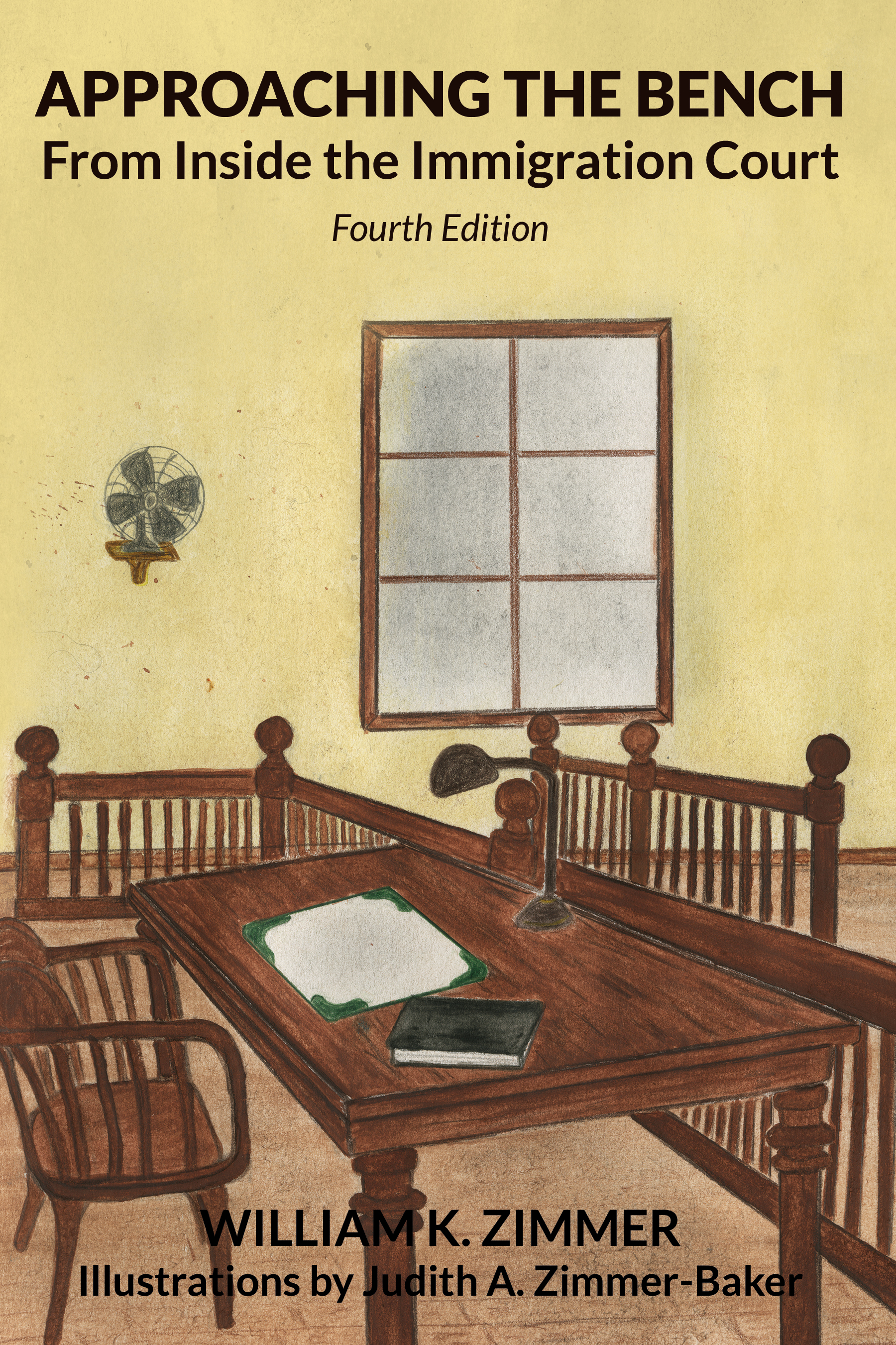NOH Receipt Invalidates MTR Based on Insufficient Notice Attributed to a Defective NTA

The procedural history, facts of record, holding and rationale in Moris Esmelis Campos-Chaves v. Garland (August 3, 2022) No. 20-60262 are as follows:
Case History
An Immigration Judge ordered the Petitioner removed in absentia.
The Petitioner moved to rescind his removal order and reopen removal proceedings. pursuant to section 240(b)(5)(C)(ii) of the Immigration and Nationality Act, as amended (“the Act”).
The Immigration Judge denied the Petitioner’s motion.
The Petitioner appealed to the Board of Immigration Appeals (“BIA”).
The BIA affirmed the immigration judge’s decision and dismissed the appeal.
Facts
- The Petitioner is a native and citizen of El Salvador who illegally entered the United States on January 24, 2005, at Laredo, Texas.
- On February 10, 2005, the Department of Homeland Security (“DHS”) filed a defective Notice to Appear (“NTA”) that did not contain the time and place of the initial removal hearing in accordance with section 239(a)(1)(G)(i) of the Immigration and Nationality Act, as amended, (“the Act”) in immigration court.
- Petitioner did not appear and the Immigration Judge ordered the Petitioner removed in absentia (a removal order issued in the respondent’s absence) based on the removal charge under section 212(a)(6)(A)(i) (an alien who is present in the United States without being admitted or paroled, or who arrives in the United States at any time or place other than designated by the Attorney General).
- On September 18, 2018, the Petitioner filed a motion to reopen.
- The Immigration Judge denied the Petitioner’s motion to reopen.
- The Petitioner appealed the denial of his motion to reopen to the BIA, contending that the Immigration Judge lacked authority to conduct the removal proceedings because the NTA was defective.
- Petitioner submitted an affidavit in which he stated that he received the NTA but that it did not contain the date and time of his removal proceedings.
- However, the Petitioner did not dispute that he also received the subsequent notice of hearing ("NOH").
- The BIA dismissed dismissing the Petitioner’s appeal.
- The Petitioner filed a petition for review of the BIA’s dismissal of his appeal, asking for a remand to the BIA to consider his defective NTA in the light of Rodriguez v. Garland, 15 F.4th 351 (5th Cir. 2021).
Held
Petition DENIED
Rationale
In addition to asserting that the Immigration Judge lacked authority to conduct removal proceedings because the NTA was defective, the Petitioner sought a remand to the BIA to consider his defective NTA in the light of Rodriguez v. Garland, 15 F.4th 351 (5th Cir. 2021) to justify reopening his removal proceedings based on insufficient notice as required under section 239(a)(1)(G)(i) of the Act.
The Fifth Circuit Court of Appeal reasoned as follows:
- In Rodriguez v. Garland (holding that an in absentia order may be rescinded upon a motion to reopen filed at any time based on a defective NTA) Rodriguez received a defective NTA which did not contain the time and place of the initial removal hearing required by section 239(a)(1)(G)(i) of the Act.
- Based on the facts of the record under review, however, the Petitioner does not dispute that he received both the NTA and the subsequent NOH.
- The fact that petitioner received the NOH (or does not dispute receiving the NOH) distinguishes the Petitioner’s factual record from Rodriguez v. Garland.
- If an alien forfeits his right to a Rodriguez remand by not giving the Government a good address, then according to the same reasoning the alien forfeits his right to a Rodriguez remand when he in fact receives the NOH (or does not dispute receiving it).
Commentary
In Moris Esmelis Campos-Chaves v. Garland (August 3, 2022) No. 20-60262, the Fifth Circuit Court of Appeal succinctly distinguishes the facts underlying Rodriguez v. Garland from scenarios in which a respondent actually receives the immigration court’s NOH subsequent to receipt of a defective NTA.
Based on Fifth Circuit case law, that a respondent who fails to provide an address at which the respondent may be contacted respecting removal proceedings, as required under section 239(a)(1)(F) of the Act, forfeits right to notice under section 240(b)(5)(B) of the Act and may not seek to reopen removal proceedings and rescind an in absentia removal order. Spangol-Bastos v. Garland, 19 F.4th 802, 807-08 (5th Cir. 2021).
Likewise, according to Moris Esmelis Campos-Chaves v. Garland, a respondent who fails to appear after receiving the immigration court’s NOH cannot claim defective notice to justify a motion to reopen, even if the NTA served by the DHS is defective for failure to contain the time and place of the initial removal hearing.
Challenge to Immigration Judge’s Jurisdiction
The Petitioner in Moris Esmelis Campos-Chaves v. Garland contended that the Immigration Judge lacked authority to conduct the removal proceedings because the NTA was defective.
The Fifth Circuit Court of Appeal did not specifically address the Petitioner’s jurisdiction challenge in Moris Esmelis Campos-Chaves v. Garland. Nevertheless, according to recent Fifth Circuit precedent case law that challenge must fail.
On March 14, 2022, the Fifth Circuit Court of Appeal reaffirmed that a defective NTA that does not include the time or date of the initial removal hearing is a valid charging document that does not deprive the immigration court of jurisdiction to hold removal proceedings, even when both Pereira v. Sessions, 138 S.Ct. 2105 (2018) and the plain meaning of section 239(a)(1)(G)(i) of the Act, are taken into consideration. Blas Eduardo Garcia v. Garland (March 14, 2022) No. 19-60793.
Recap of Rodriguez v. Garland
A motion to reopen may be filed without any time limit if the alien is seeking to demonstrate insufficient notice under section 239(a)(1) and (2) of the Act.
The Fifth Circuit Court of Appeal emphasized that specific textual reference to 239(a) of the Act in the “stop-time” provision of section 240A(d)(1) of the Act (cancellation of removal) and in the provision for rescission of an in absentia order in section 240(b)(5)(C)(ii) of the Act distinguishes these provisions from others that have been considered. Rodriguez v. Garland, at 355.
Thus, it seems that a defective NTA that omits any specified information listed in section 239(a)(1) of the Act, such as the time and place of the initial removal hearing, will fail as written notice in any application under the Act as long as a specific textual reference to 239(a) of the Act can be established.
In general, failure to receive proper notice will justify reopening an in absentia hearing and rescission of the in absentia order of removal at any time under Rodriguez v. Garland.
In Absentia Hearings
In my experience, in absentia hearings seemed numerous. Consequently, motions to reopen in absentia hearings accounted for a relatively large number of motions filed in immigration court.
In the past, the primary challenge for DHS attorneys moving to proceed in absentia was to establish proof of service of the hearing notice to the last address provided by the respondent (i.e. the individual who is the subject of removal proceedings), as required in section 239(a)(1)(F) of the Act. See section 240(b)(5) (A) of the Act. Then, of course, the DHS attorney needed to prove that the respondent was subject to removal.
In particular, to obtain an in absentia order, the DHS attorney must prove by clear, unequivocal, and convincing evidence not only that notice had been provided at the last address provided by the respondent, but that the allegations and charge(s) on the NTA were true. See section 240(b)(5)(A) of the Act.
To the surprise of some readers (and also Executive Office For Immigration Review (“EOIR”) administrators) properly conducting in absentia hearings consumes a significant portion of time for Immigration Judges and DHS attorneys.
In light of Rodriguez v. Garland, disposing of in absentia cases, at least in the 5th Circuit, will be much less time consuming, because many NTAs lack the time and place of the initial hearing required by section 239(a)(1)(G)(i) of the Act.
General Procedure
My practice, while on the bench in Miami, Florida and Houston, Texas, was to conduct in absentia hearings after completing master calendar hearings for respondents who had made personal appearances. Some Immigration Judges will postpone the in absentia hearing to another day, but this action necessarily requires new NOHs and the possibility of unforeseen need for future resets. In my opinion, simpler is better.
Readers who are unfamiliar with the phrase, “master calendar,” might benefit from a description of removal proceedings.
One way to describe a removal proceeding is to compare it to a criminal trial. Criminal trials are divided into two parts; the guilt phase and the punishment phase. Removal proceedings are also divided into two parts. In the first part, the Immigration Judge will determine whether the DHS allegations are true and support the removal charge and whether the removal charge can be sustained. In the second part of removal proceedings, the respondent, whom the DHS has proven to be a removable alien, has the right to apply for relief from removal. Relief from removal usually takes the form of one or more applications to legitimate immigration status permanently or temporarily to avoid removal.
During the course of a removal hearing, the respondent is entitled to a reasonable opportunity to obtain legal counsel at no expense to the federal government. This is not an absolute right to counsel. See Vides-Vides v. INS, 783 F.3d 1463, at 1469 (9th Cir. 1986). The respondent also has the right to review and object to DHS evidence (except evidence involving the national security of the United States), to submit testimony and evidence and cross-examine witnesses. See generally, section 240(b)(4) of the Act. Removal proceedings are generally open to the public. See 8 C.F.R. § 1240.10(b).
Master Calendar Hearing v. Merit Hearing
The very first hearing in removal proceedings is described as a master calendar hearing. At that first master calendar hearing, the Immigration Judge will inform the respondent about the right to representation at no expense to the government, and provide a legal aid list of pro bono organizations in the city where the hearing is being conducted. In addition, the Immigration Judge will inform the respondent about the nature of removal proceedings and the respondent’s rights in such proceedings. This involves describing in plain language the basic structure of removal proceedings, the allegations and removal charge(s), the respondent’s rights, and making certain that the respondent understands. See 8 C.F.R. § 1240.10.
The Immigration Judge will explain or provide written notice that if the respondent fails to appear at a removal hearing without exceptional circumstances outside of the respondent’s control the respondent will be ordered removed from the United States in the respondent’s absence. A removal hearing conducted in the respondent’s absence is known as an in absentia hearing. The Immigration Judge will inform the respondent that if a removal order is issued in an in absentia hearing the respondent will become ineligible for a period of 10 years for voluntary departure, adjustment of status, cancellation of removal and an application known as registry. See section 240(b)(7) of the Act. This responsibility makes it very important for an Immigration Judge to be patient and strive to be a good communicator. A judicial temperament is sometimes more important than legal acumen, but hopefully these traits will go hand in hand.
Usually, another master calendar hearing is scheduled to allow time for the respondent to consult and hire legal counsel if requested by the respondent. Law and regulations obligate the Immigration Judge to inform the respondent at some time during immigration proceedings about apparent eligibility for relief from removal. Matter of Cordova, 22 I&N Dec. 966, at 968 (BIA 1999). Even if the respondent is represented, Immigration Judges often engage the respondent’s representative in a brief discussion about potential relief applications before scheduling a hearing on the merits of relief from removal.
The second part of removal proceedings is often described as a merits hearing or an individual hearing. At the conclusion of the merits hearing, the Immigration Judge will issue an oral decision containing findings of fact and conclusions of law and an order disposing of the respondent's relief applications. See Matter of S-H-, 23 I&N Dec. 462 (BIA 2002); Matter of Rodriguez-Carrillo, 22 I&N Dec. 1031 (BIA 1999).

